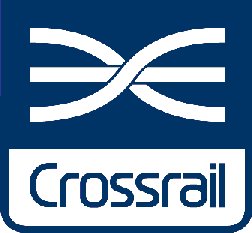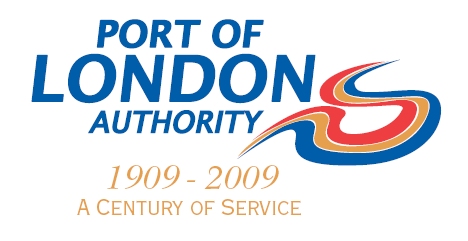30.09.2009
Crossrail will move 5m tonnes via River
Memorandum of Understanding signed with Port of London Authority
will substantially reduce Crossrail lorry journeys
Crossrail Media Release
.jpg) |
|
Excavated materials from the Canary Wharf work site departing by barge. 30 September 2009. |
London's business leaders have reiterated their support for the Crossrail project on the day Crossrail announces that more than five million tonnes of material excavated from the project will be transported by boat along the Thames for use in landscaping projects. These include a new 1,500 acre nature reserve at Wallasea Island in Essex.
Today Crossrail signed a Memorandum of Understanding (MoU) with the Port of London Authority (PLA) to confirm its commitment to use barges and ships along the Thames to move its excavated materials. If the equivalent five million tonnes were to be transported by road they would require up to half a million lorry journeys.
The Mayor of London, Boris Johnson, said:
"Moving five million tonnes of earth excavated from the centre of London requires a solution of Herculean proportions. Using the barges rather than the roads is a supremely brilliant plan and it brings joy to my heart to see them make their way up and down the Thames.
"Using barges avoids the need for a huge number of lorries to grind their way through the city. It also brings together two of our key priorities – making better use of the river and keeping digging for Crossrail.
"Crossrail will add at least £20 billion to the economy and employ some 14,000 people. It is crucial to London’s economic prosperity and I'm absolutely delighted to see work steaming ahead."
During the delivery of Crossrail, Europe’s largest construction project, a total of 7.3 million m³ of material will be excavated, which is the equivalent of covering the whole of Hyde Park and Kensington Gardens with a three metre layer of soil. Close to 100% of the 7.3 million m³ of excavated material is expected to be clean and uncontaminated and can be reused elsewhere. The project will maximise the use of water and rail for the transport of excavated material, and project managers estimate that on a tonne per kilometre basis, 85 per cent of transport of the material will be by rail and water only.
Commenting on the proposals Transport Minister, Rt Hon Sadiq Khan MP said:
"This is a welcome announcement, which underlines the green credentials the Government is keen to see applied to this huge project, while reducing disruption to London's busy streets.
"We are building a new railway line that will benefit millions of people, both directly and indirectly. By using excavated material to redevelop Wallasea Island and aid regeneration in Kent we are also creating a legacy which will benefit areas far beyond the route for generations to come."
Baroness Jo Valentine, Chief Executive of influential business group, London First said:
"Crossrail is crucial if London is to continue to compete for business investment and jobs with the other major world cities. It is vital that we have the infrastructure needed to accommodate growth. In building Crossrail and upgrading the Tube, London is investing for recovery while offering construction activity and jobs through the worst of the downturn."
Further details on the management of construction works in London were also outlined today. They include the tight control of lorry journeys, particularly in central London, and further emphasis on ensuring excavated material is removed in the most environmentally friendly and efficient way. Agreement has been reached with the South East of England Development Agency (SEEDA) to transport the remainder of clean excavated material to regeneration sites in Kent where it will be used to assist with the future redevelopment of the area.
Crossrail has also confirmed its commitment to work with the Royal Society for the Protection of Birds (RSPB) to create a nature reserve at Wallasea Island in Essex. Over 4 million m³ of the excavated material generated from construction of the new tunnels will be used for the island. The proposals, which have been approved by Central Government and Essex County Council, will create one of the largest new wetland nature reserves in Europe for some 50 years.
The mud flat and salt marsh habitats created at Wallasea Island will act as a carbon sink and will soak up 2.2 tonnes of carbon per hectare per year. In the region of 400 hectares of this habitat will be created. The transport arrangements have been planned with consideration of the environment and hence carbon cost as a major factor. Transport by water is the order of a quarter of the carbon cost of transport by road.
Crossrail Chief Executive, Rob Holden said:
"All construction projects by their nature will result in some degree of disruption but it is critically important that the impact on central London is kept to a minimum while Crossrail's construction is underway. The Mayor and Central Government have been very clear that we must do all that we can to limit Crossrail's impact in terms of lorry movements.
"Crossrail has been in discussions with local authorities as well as residents and businesses for several years to plan these construction works but also to agree the most appropriate methods for transport of excavated material. The final destinations for the excavated material in Essex and Kent have been specifically chosen to ensure that the vast majority is transported by either rail or river thereby limiting the impact on the road network.
"That’s why we've signed up to work with the PLA to help us make the most of the river for the project. Using the river is fundamental for us. You can move much more material on the river in one barge compared to a single lorry; doing so also takes much less energy and generates far fewer environmental emissions."
Port of London Authority Chief Executive, Richard Everitt said:
"The Thames is London's greenest highway. It's already the busiest waterway in the country. We've been working alongside the Crossrail team to help them make the most of the river to help keep the impact of the construction of the rail links to a minimum. Our role is to help turn their vision into reality, linking their construction operations with sites on the river for handling materials. Today we’re talking about moving materials out of the capital. Just as important is using the river to get the vital building materials to site and that's something we're already working on."
 |
 |
Media inquiries:
Martin Garside, Corporate Affairs Manager, Port of London Authority
Tel: 01474-562366
Jonathan Baggs, Press Officer, Crossrail Press Office
Tel: 020 3229 9552
Jonathan Edwards , Press Officer, Mayor of London's Press Office
Tel: 020 7983 4337

.jpg)
